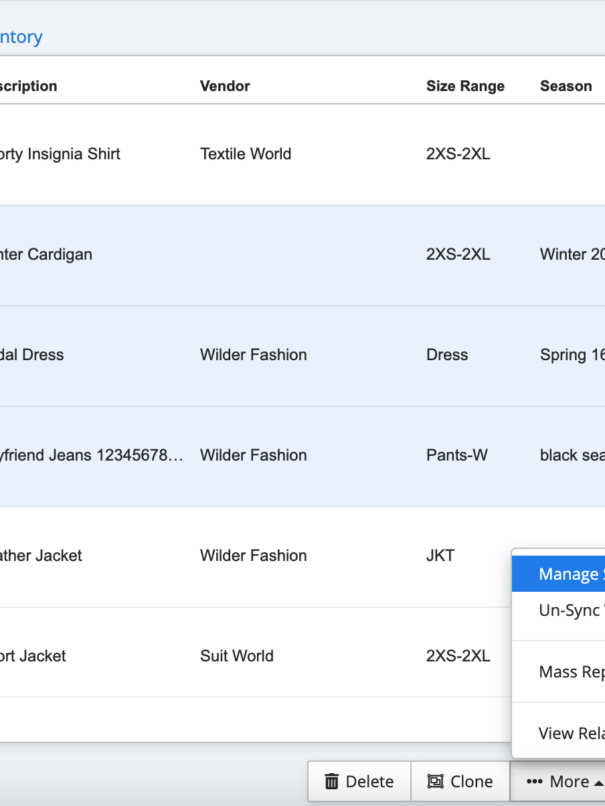In the retail sector, a notable transformation is unfolding in how holiday returns and exchanges are managed, especially for eCommerce stores. The festive season, traditionally a time of joy and gift-giving, is increasingly connected to a common aspect of consumerism: the process of returning or exchanging unwanted or unsuitable gifts.
A fascinating trend highlighted by Freestyle Solutions shows that online retailers are now dealing with holiday gift returns at a staggering rate of 35%. This is a sharp increase compared to the usual return rate of about 16% for items other than electronics, like entertainment items, and everyday purchases, including mobile phones. This significant difference points to the unique challenges the holiday season brings to e-commerce businesses.
Today’s consumers are increasingly comfortable with the idea of returning holiday gifts. This change in behavior moves beyond traditional reluctance, reflecting a more pragmatic approach to gift-giving and receiving.
The act of returning a gift, which once might have been seen as socially awkward, is now accepted by many retailers as a normal part of the modern shopping experience during the holidays.
Furthermore, the ease and efficiency of online purchases, the shipping fees, and return processes have significantly influenced this trend. With the advent of free returns and simple procedures, returning a product is no longer a daunting task but a convenient option, encouraging consumers to make returns when needed.
However, this raises a question: how do businesses make this process seamless while ensuring customer satisfaction and smooth operations?
Let’s delve into the challenges they face and the strategies they can employ to navigate this evolving landscape.
Operational and Logistical Challenges
The surge in returns necessitates a robust logistics network of stores capable of handling the influx of returned items. This involves not just the physical process of stores receiving returns but also inspecting, restocking original items purchased, packaging, shipping, or disposing of these products.
As per Coresight Research, the alarming return rates in the online apparel and footwear market, estimated to total $38 billion in returns in 2023, indicate the scale of this challenge. Retailers must adapt to manage this efficiently to prevent a bottleneck in their stores, supply chain, and customer service operations.
Economic Implications
The financial impact on retailers is significant. High return rates translate to increased return costs as well as shipping costs, processing and refund, costs, refunding, and restocking of purchases.
Coresight Research highlights the heavy financial toll, noting that it can cost a retailer or a company 66% of the purchase price of a product to process a return. This cost, combined with the lost revenue from potential sales, can severely dent a store or retailer’s profitability. McKinsey further underscores the importance of using returns data to inform various stages of the purchase and retail process, including planning, store design, and development and assortment, to mitigate these costs.
Moreover, the trend towards offering full refunds or refunds on purchases and free shipping on returns, as reported by 98% of the apparel companies surveyed by Coresight Research, adds to the economic pressure on most stores. This customer-friendly refund, exchange, and return policy, while beneficial for consumer satisfaction, also compounds the financial burden on retailers.
Adapting Strategies and Technology
To combat these challenges, retailers are increasingly turning to technology and innovative strategies. This includes using return items’ data analytics to understand and reduce return rates on most items and implementing best buy and no-return policies and tools to improve the return process.
That being said, tools like virtual try-ons and size guides are becoming more prevalent in helping customers make better purchasing decisions and return items, thereby reducing return rates.
But, one of the best tools to ensure operational efficiency in the apparel industry is, of course, enterprise resource planning ERP systems.
Essential Functionalities of Apparel ERP Systems
- Supply chain management (SCM): SCM in apparel ERP systems provides an integrated view of the entire supply chain, from procurement to product delivery. During the holiday season, this is crucial for managing the high volume of returns and exchanges. It helps in forecasting demand, tracking inventory levels, and ensuring timely restocking of returned goods.
Effective SCM minimizes delays and ensures that products are available where and when they are needed, thereby maintaining customer satisfaction and operational efficiency.
- Warehouse management system (WMS): WMS functionalities are vital for efficiently managing the influx of returns during the holidays. They enable better control and oversight of warehouse operations, including the receipt, inspection, and processing of returned goods. By automating and streamlining these processes, WMS reduces errors and speeds up the turnaround time for returned items, either to be resold or processed further.
- Electronic data interchange (EDI): EDI capabilities in apparel ERP systems allow for seamless communication between different stakeholders, including suppliers, retailers, and logistics providers. During the holiday season, EDI plays a crucial role in efficiently managing returns and exchanges by enabling quick and accurate exchange of information regarding stock levels, return requests, and processing statuses. This leads to reduced processing times and improved accuracy in handling returns.
Advantages of Using Apparel ERP Systems
Industry-specific ERP solutions are designed to handle the unique challenges and dynamics of the apparel industry. These include managing a wide range of product sizes, colors, and styles, as well as adapting to the seasonal fluctuations inherent in the fashion sector.
By integrating essential functionalities like SCM, WMS, and EDI, apparel ERP systems enable retailers to respond more agilely to market demands, particularly for online purchases and during the critical holiday season.
They help streamline operations, reduce errors, and improve a retailer’s overall efficiency, which is crucial for maintaining customer satisfaction and competitive advantage in the fast-paced fashion industry.
In essence, apparel ERP systems provide retailer customers with a holistic solution that supports retailers in effectively managing the complexities associated with their holiday purchases, exchanges and returns, contributing to enhanced operational efficiency and customer service excellence at major retailers.
Let’s explore some more key benefits in-depth below.
Integration of ERP in Real-Time Inventory Management
- ERP’s role: ERP systems offer a centralized platform that integrates with various facets of retail operations, providing live updates on inventory status as products are returned.
- Benefits: This level of integration ensures accurate inventory tracking, which is vital for maintaining up-to-date stock levels and making informed decisions on inventory replenishment.
Categorization and Processing through ERP
- Systematic approach: ERP systems automate the categorization of returned items, efficiently segregating them based on their condition for resale, refurbishment, or liquidation.
- Operational efficiency: This automated approach minimizes manual effort, speeds up the processing of returns, and ensures that products are quickly returned to the inventory or appropriately disposed of.
Data Analytics and Forecasting in ERP
- Analytics capabilities: ERP systems come equipped with advanced analytics to scrutinize return trends, providing actionable insights into customer return behavior.
- Forecasting and planning: These analytics aid in forecasting future return rates and in adjusting inventory levels accordingly, ensuring optimal stock management.
Enhancing Customer Experience with ERP-Enabled Return Policies
ERP and the Inclusion of Gift Receipts
- Automated receipt generation: ERP systems can automate the generation of gift receipts for each purchase, streamlining the return process for gift recipients.
- Streamlining customer experience: The inclusion of gift receipts, managed through the ERP system, enhances transparency and trust, leading to a better customer experience.
Automating Return Processes with ERP
- Efficient return management: ERP systems can offer automated return management portals, allowing customers to initiate returns with ease.
- Customer satisfaction: By making returns hassle-free and efficient through ERP-driven automation, customer satisfaction is greatly enhanced, fostering brand loyalty.
Leveraging ERP for Enhanced Return Experiences
- Return experience and brand loyalty: A positive return experience, facilitated by an efficient ERP system, can significantly boost customer loyalty.
- Encouraging repeat business: Satisfied customers, thanks to a streamlined return process managed by ERP, are more likely to return for future purchases.
Utilizing PIM within ERP for Product Information Accuracy
Accurate Product Descriptions through ERP-Integrated PIM
- Detailed product information: ERP systems integrated with PIM ensure that product descriptions are accurate and comprehensive, covering all necessary details.
- Reduced return rates: Accurate product information leads to informed purchasing decisions, significantly reducing the likelihood of returns due to misinformation.
Enhancing Online Shopping with ERP-PIM Integration
- Quality of online presentation: Integrating PIM with ERP ensures that the online representation of products is precise and informative, enhancing the online shopping experience.
- Customer Confidence: Accurate product information via ERP-PIM integration builds customer confidence in their purchasing decisions, leading to fewer returns.
Feedback-Driven Product Improvement in ERP
- Incorporating customer feedback: ERP systems can effectively utilize customer feedback and return data for continuous product improvement.
- Adaptive product strategies: Leveraging this data within the ERP framework enables retailers to adapt and improve their product offerings, aligning them more closely with customer needs and preferences.
Conclusion
The surge in holiday exchanges and returns in the e-commerce world is more than a mere seasonal trend; for many retailers, it’s a pivotal shift in the retail narrative. As consumers increasingly embrace the practicality of returning holiday gifts, retailers face a complex web of challenges and opportunities.
The stark contrast between the festive spirit of giving and the pragmatic reality of returns encapsulates a new era in consumer behavior.
Navigating this landscape requires a blend of innovation, adaptability, and technological prowess.
Retailers must rise to the occasion, transforming these challenges into strategic opportunities. By leveraging advanced technologies like apparel ERP systems, they can streamline the in-store return process, ensuring operational efficiency and customer satisfaction.
The economic impact of this trend toward more holiday return policies is undeniable, but so is the potential for retailers to redefine their approach to customer service-free returns and supply chain management. Embracing this shift in holiday return policy can propel retailers to new heights of customer loyalty and operational excellence. In a world where the ease of returns is as important as the joy of giving, those who master the art of managing holiday returns will not only survive the holidays but thrive.
As we look towards future extended holiday returns, it’s clear that the realm of e-commerce holiday returns will continue to evolve, and with it, the strategies for handling holiday returns. This season of returns could very well be a golden opportunity for retailers to shine, showcasing their resilience, innovation, and unwavering commitment to customer satisfaction. In the end, it’s not just about managing returns; it’s about reimagining the retail holiday return experience in an ever-changing digital world.







